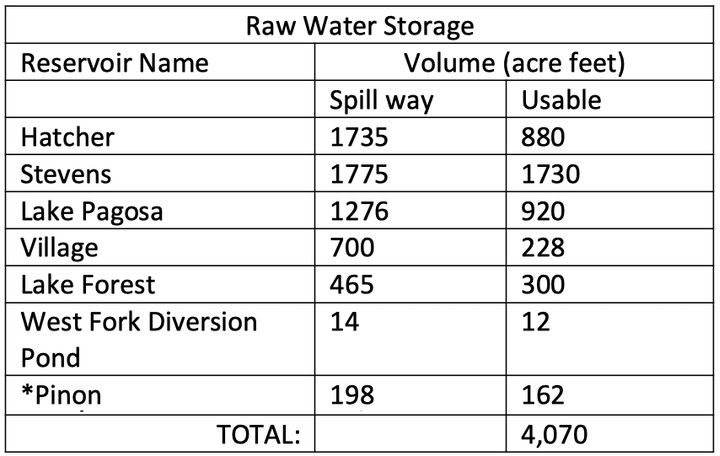This week, a fellow member of the San Juan Water Conservancy District board emailed a link to an article by writer Gary Pitzer published in Western Water magazine (republished by Water Education Foundation).
The article title:
Questions Simmer About Lake Powell’s Future As Drought, Climate Change Point To A Drier Colorado River Basin
The article repeats an as-yet-unproven theory that 1) the American West is entering a long-term ‘megadrought’ and 2) ‘climate change’ will necessarily mean less water in the Colorado River and other western rivers.
The story also shares a wide range of views about what should be done with Lake Powell, if this ‘megadrought’ theory actually holds water.
Tear down the Glen Canyon Dam? Require Colorado and other ‘Upper Basin’ states to send additional water downstream to fill the struggling reservoir? Require California to stop using more than its share of Colorado River water?
We learn from the article that Colorado, Wyoming, Utah and New Mexico use much less Colorado River water than the 7.5 million acre-feet they were allotted annually under the Colorado River Compact, the 1922 agreement adopted by the seven US states along the Colorado River. At the same time, California has been using more water than it was originally allocated. We might be tempted to blame the Los Angeles metro area for the excess diversions, but in fact, the lion’s share of water extracted by California goes to wealthy industrial farmers in the Imperial Valley east of Los Angeles.
Imperial Irrigation District receives 3.1 million acre-feet of water annually from the Colorado River. The rest of California receives 1.3 million acre-feet. In other words, the 180,000 people in the Imperial Valley receive approximately 70% of California’s allocation of water from the Colorado River. The other 20 million-plus people in Southern California get about 30%.
This might remind us of the water situation in our own community of Pagosa Springs, where it appears that 399 farms and ranches account for 94 percent of the total water usage in the county, while the residential population of 13,500 uses the other 6 percent.
To judge by news articles I’ve come across, California’s Imperial Irrigation District is a political sacred cow. No one in a political leadership position seems courageous enough to challenge the valley’s right to massive diversions from the Colorado River — even as we’ve watched Lake Mead and Lake Powell, the American West’s two largest water reservoirs, slowly drained to half their capacity.
On a smaller scale, the agricultural water users in Archuleta County — many of them holding ‘senior water rights’ — have been essentially left out of every water supply discussion I’ve reported on since I started writing for the Daily Post in 2004.
On a smaller scale, you could say Archuleta County agricultural industry has been treated like a political sacred cow, in terms of water diversions.
A much, much smaller scale…
But while the Imperial Irrigation District reportedly generates an annual harvest of more than $2 billion, a US Department of Agriculture report from 2017 indicates that our local agriculture sector generates a net loss of -$2.1 million. In Region 9’s ‘Economic Snapshot 2020’ report, they estimated 413 people were employed in ‘Agriculture’ in Archuleta County. (Whether that includes people planting and harvesting marijuana, I cannot say.)
As I suggested in Part Four, many of the agricultural operations in Pagosa Springs depend upon ‘trophy ranches’ — property owners who contract with folks who maintain a herd of cattle, to arrange to have their ranches grazed for several weeks each year, and thereby allow the property owner to request an “agricultural” classification for their property, greatly reducing the amount of property tax owed by the ranch owner.
I have no data showing the amount of ‘senior water rights’ in use by these trophy ranches. It might be a significant number.
We also discussed previously that, regardless of the frightening ‘megadrought’ narrative we’ve been hearing from the water industry, the situation in Pagosa Springs — heading into June — is surprisingly normal, with all of our municipal reservoirs being full or nearly full, and plenty of water flowing down the San Juan River. Pagosa Area Water and Sanitation District (PAWSD) recently supplied an assessment of the water available for treatment in our numerous storage reservoirs, when they are full:

The same PAWSD document stated:
In 2018, PAWSD produced 2,104 acre feet of water.
This 2,104 acre feet of treated drinking water serves maybe 75 percent of the homes and businesses in Archuleta County. Unfortunately, the PAWSD water system suffers from leaks and other issues, and loses a significant percentage of their treated water before it arrives at its final destination. A recent PAWSD document suggests that about 1,237 acre-feet of drinking water made it to customers’ homes and businesses in 2019 — suggesting that maybe 900 acre-feet per year, or around 40% of our treated water, is lost to leaks and other ‘non-revenue’ uses.
If we assume that PAWSD will never be able to fix their leaks, then we currently have about two years worth of water storage, even if not a single drop of rain or flake of snow fell for two years.
If PAWSD were able to completely eliminate ‘non-revenue’ water losses, then the District might have more than three years of water storage, assuming all reservoirs are full.
Certainly, a 50-year ‘megadrought’ would make those estimates meaningless… primarily because we would all change the way we think about water… and how it gets wasted… and how it gets taken for granted.
Might we also change the way we think about ‘senior water rights’ and ‘trophy ranches’…? But maybe we don’t need a ‘megadrought’ to start considering that question. Maybe we just need some courageous community leadership.
